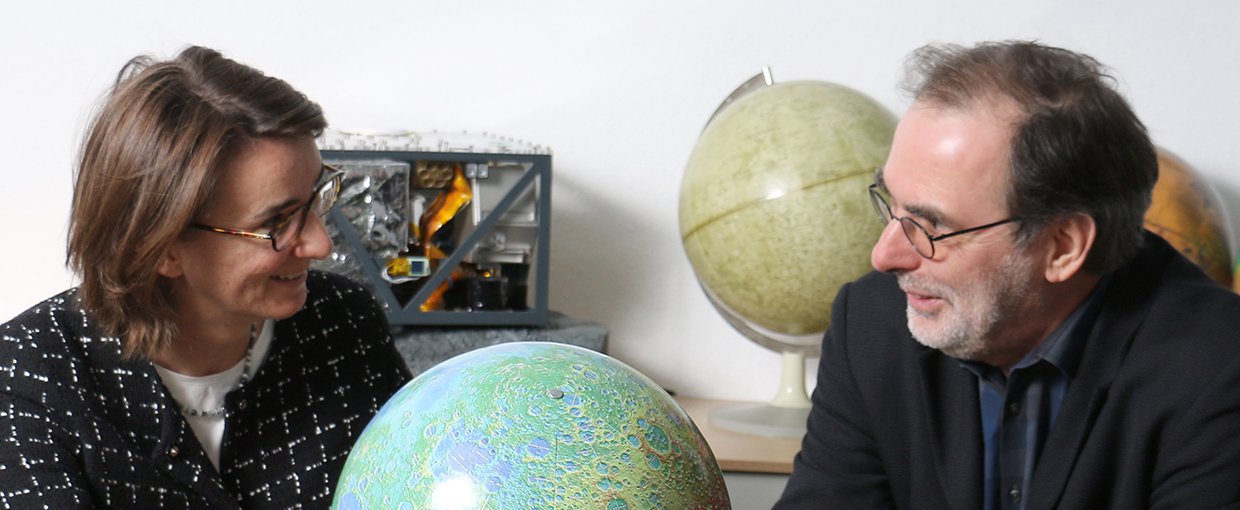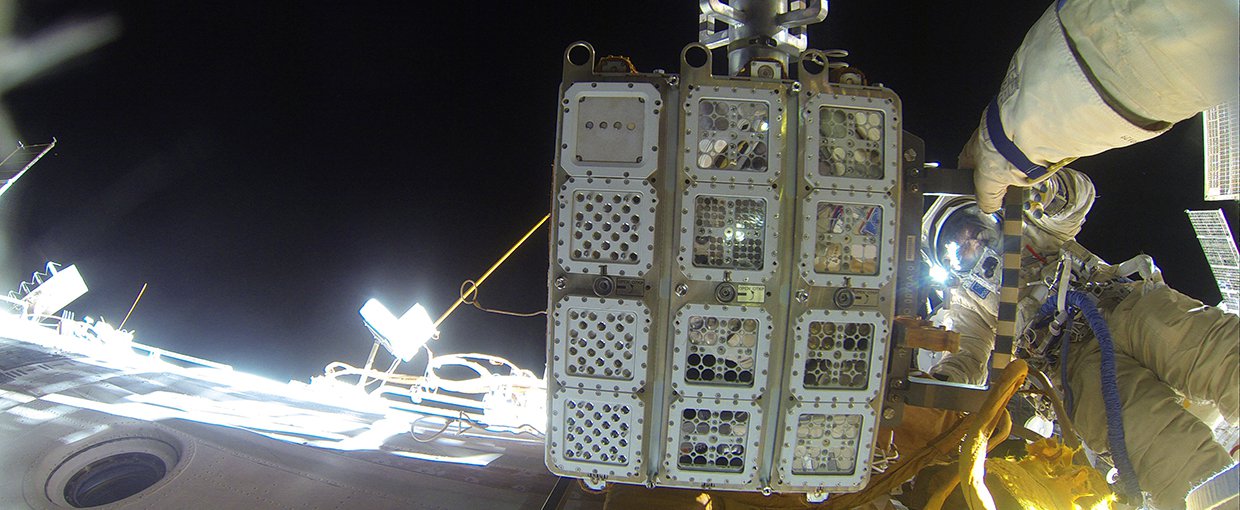Written byStarre Vartan

Each of NASA’s international astrobiology partners take a different tack in looking for the answer to the question of whether there is life elsewhere in the Universe. A creative, multi-pronged investigation is necessary with such a complicated problem – the answer will draw on a collaborative approach among biologists, geologists, chemists and many others.
In the case of the German Aerospace Center (DLR)’s Institute of Planetary Research, there are two areas on which they focus their attention.
DLR specializes in developing technology for space missions, including photometric technology, radiometers, laser altimeters, thermal probes and spectrometers, and contributes to NASA projects including Cassini, InSight and Dawn, plus European Space Agency (ESA) missions such as CoRoT, Rosetta and ExoMars and the forthcoming JUICE (JUpiter ICy moons Explorer) spacecraft. In particular, cameras are a speciality.
“For example, we built a high-resolution stereo camera for Mars Express, which is the oldest camera on a European Space Agency mission still in operation,” says Professor Heike Rauer, the new Director of the DLR Institute of Planetary Research. “It’s been running for 15 years, and takes 3D images.”
Those high-resolution, color images have revealed details about Mars’ geologic and climate history, including evidence of ancient water flows that have led to evidence-based discussions of human habitability and settlement on the red planet.
In addition, DLR has performed astrobiological experiments, for example BIOMEX (BIOlogy and Mars Experiment) on board the International Space Station, which tests the extent to which extremophiles can survive in particular space environments. Furthermore, Rauer is head of a consortium developing an instrument for the planet-finding PLATO mission that will detect and characterize Earth-like planets in the habitable zone of Sun-like stars. This ties in with their second focus, which is to understand the evolution of planets, both in our Solar System and around other stars. By understanding the planetary processes that make life possible, the search for life elsewhere can be concentrated on the places where it’s most likely to have evolved.
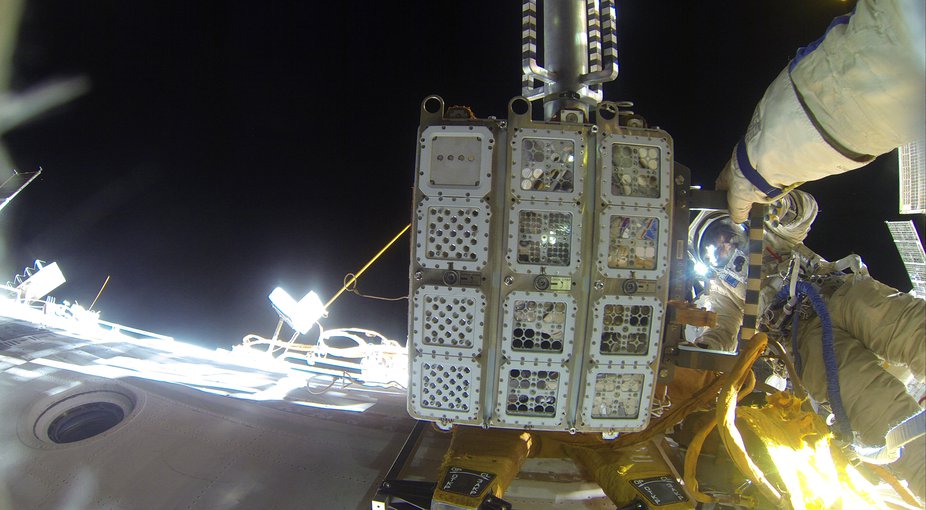
The BIOMEX experiment, performed by DLR, being attached by astronauts to the exterior of the International Space Station.Image credit: ESA.
Helmholtz Alliance
This aspect of DLR’s work began with the Helmholtz Alliance ‘Planetary Evolution and Life’ project. The Helmholtz Alliance is a science-focused program of the German government designed to solve “the grand challenges of science, society and industry.” Helmholtz gives out five-year grants to scientists who work in German institutions and elsewhere to come together on collaborative projects that especially aim to involve young people and promote equal opportunity.
DLR’s planetary research work was funded in 2008 by Helmholtz and continued through 2015, having received an extension on the work in order to use up all the funds.
In the framework of the Helmholtz Alliance, DLR became an affiliated partner of the NASA Astrobiology Institute (NAI) in early 2013. The Helmholtz program was only meant to be a one-time ‘jump-start’ for a research area, which is exactly what was accomplished with the $5 million euro per annum fund that made Germany one of the leading nations in planetary research. The planetary evolution work at DLR is now a regular research program with a long-term funding perspective, says the Alliance’s former director, Professor Tilman Spohn. While funding isn’t quite as robust as it once was under Helmholtz, it still stands as an independent program at the DLR.
During the six years that planetary evolution research was a Helmholtz program, “We did some exoplanetary research, but we had a strong focus on Mars,” says Spohn. “We made major contributions using the data from Mars Express to look into the various [potentially] habitable provinces on Mars to find where life could have originated and could still be present. It was good to start something new and interesting and then make it sustainable [under the aegis of DLR].”
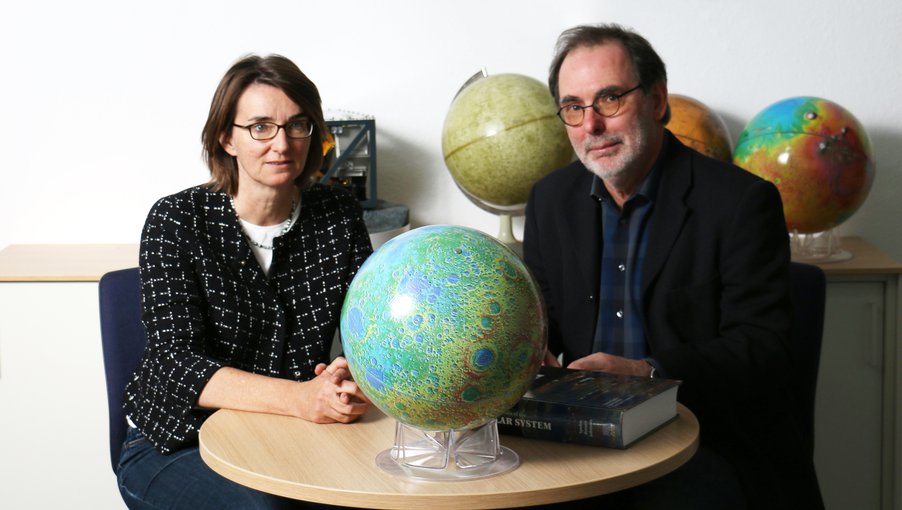
Heike Rauer (left), the Director of the DLR Institute of Planetary Research, and Tilman Spohn, the former director.Image credit: DLR.
Where to look for life
The big question that the planetary research program is currently attempting to answer is the same as before: how can we figure out which of the many planets outside our solar system might harbor life? Scientists need to set defined parameters in order to make smart guesses about where to look. So they look for what life might leave behind, or signs that might reveal indirect evidence for life. Life might exist now, but may not be obvious, so looking for coincident or non-obvious signs of life is important. Elsewhere in the Solar System, life is more likely to have existed in the past than in the present, so what might it have left behind?
“We are looking for a better understanding of habitability and of biosignatures,” says Rauer. “In one case – our solar system – we can go and look, but with extrasolar planets we cannot go there, which means the only way we can detect life is by studying the atmospheres of exoplanets.”
That’s why DLR is looking closely at “the link between interiors, surface and atmosphere,” of planets, says Rauer. Understanding how each of those planetary regions affects the others enables scientists to see what might be produced by normal geologic or chemical processes, for example – and what might be anomalous.
DLR is looking at some big questions that could apply to a wide variety of types of life, from single-celled to multicellular. “How does life leave imprints on the atmosphere? That’s important for places where we can’t send rovers,” says Rauer. She says that knowing what signs to look for could enable future researchers to scan for life simply by looking at the atmosphere of a planet. Of course, it’s also important for astrobiologists to study how life has “interactions with the surface and could leave its impact there.”
Other related questions include how life might affect the evolution of an entire planet over time. “This is a novel look at planetary geophysics – how do tectonics and interior structures influence the development of lifeforms?” asks Rauer. Since Earth has developed in tandem with life, and life has been affected by the geophysics of the Earth, we know that both of these things have happened at least once, here. So, looking for those signs and asking those questions elsewhere makes sense.
To that end, DLR works on modeling planet formation and tectonics, the inner structures of planets, how magnetic fields originate, and how meteor impacts affect all of the above. They also engage, along with their partners, in laboratory investigations of extremophiles in conditions similar to Mars or space, and how water behaves in different environments. And, of course, they are figuring out how to detect organisms on the surface of a planet.
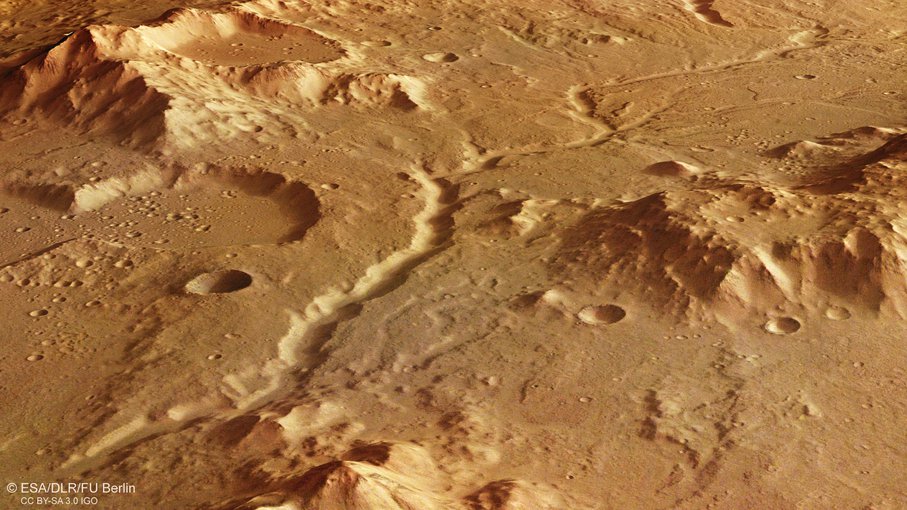
A perspective view of an ancient river channel in the Libya Montes region of Mars, created by the DLR high-resolution stereo camera on board Mars Express.Image credit: ESA/DLR/FU Berlin.
Research areas
All of these questions fit within six specific areas that DLR’s Planetary Evolution and Life program tackles, often interdependently:
The Planetary Evolution and Life program started, as many great projects do, with the feeling that there was an understudied area that needed attention. Spohn says that he has long looked at the evolution of planets, including Earth, Mars, Venus and others. “But we never looked at the potential effect of life on these planets. I thought to myself that maybe we should include the interaction of life with planetary processes in our modeling. Nobody in the previous astrobiology community had really looked into a combination of geophysical tools and modeling together with the effects of life.”
Under the Helmholtz Alliance, the Planetary Evolution program worked with – and plans to continue working with, as part of DLR – international partners across Europe and beyond, including ESA, NASA Ames, NASA’s Jet Propulsion Laboratory, the Johns Hopkins University Applied Physics Laboratory, the Japan Aerospace Exploration Agency (JAXA), the French Centre national de la recherche scientifique (CNRS) and Centre national d’études spatiales (CNES), and many other institutions and universities around the world.
An important part of DLR’s work under Helmholtz was supporting and involving grad students and early-career scientists in both the questions and the work the institute undertook. “Much of the work has been done by students, young grad students and post-docs,” says Spohn. “We let students in on many aspects of the work, and they also looked into missions – how they are devised and managed, and put into space, so they see the whole process.”
This aspect of the program is likely to continue, as young scientists are drawn to the still-unanswered question: “Are we alone in the Universe?”
International Partner Series:
Australian Center for Astrobiology
The Astrobiology Society of Britian
The UK Centre for Astrobiology
Spain’s Centro de Astrobiología
Sociedad Mexicana de Astrobiología (SOMA)
